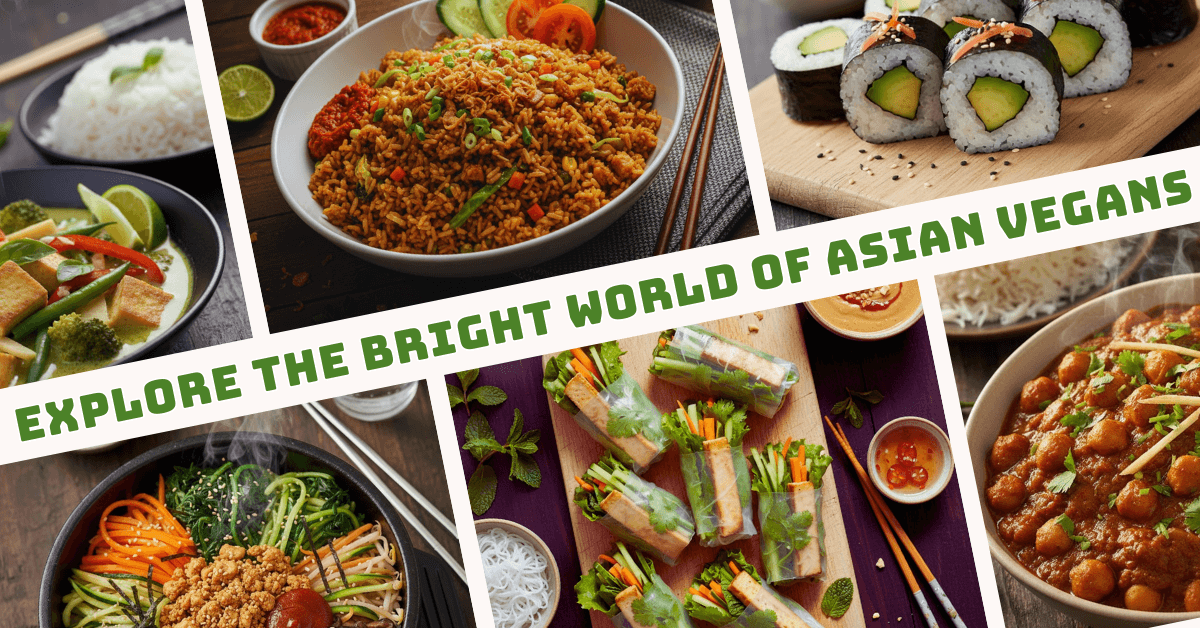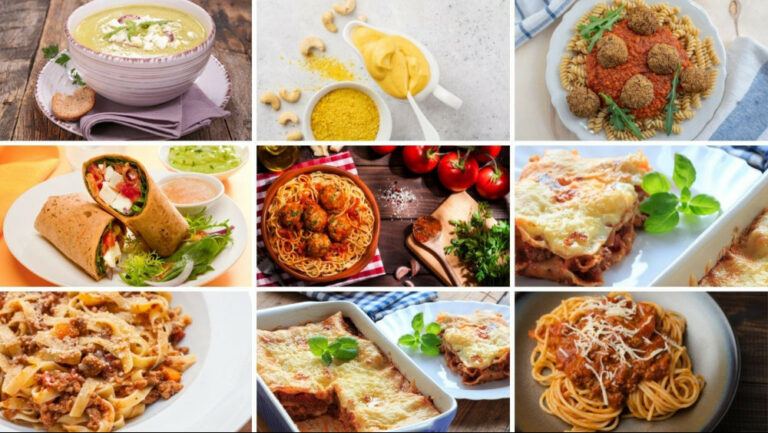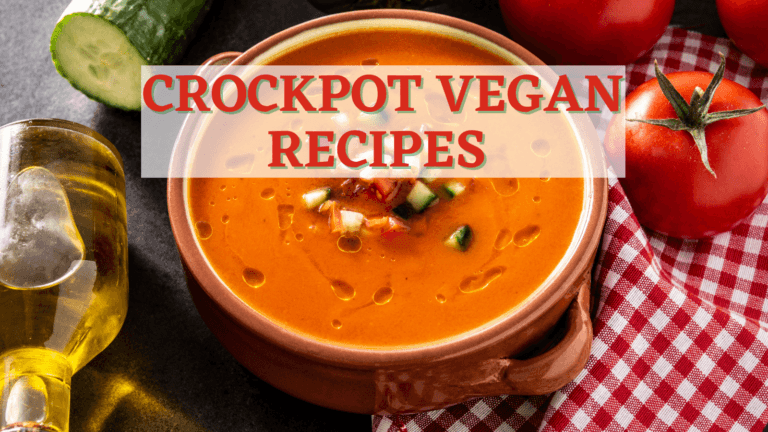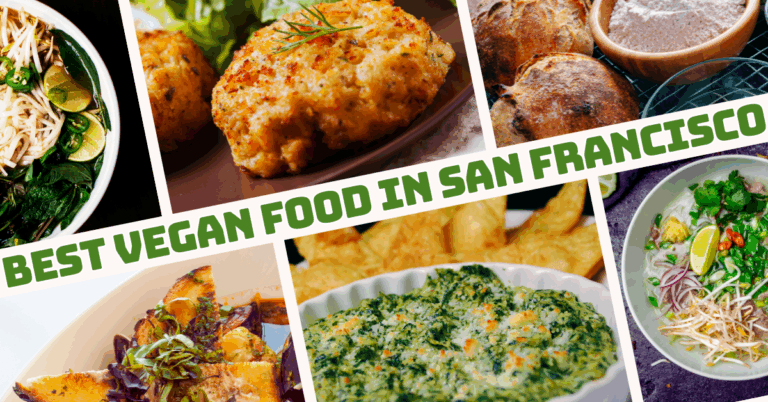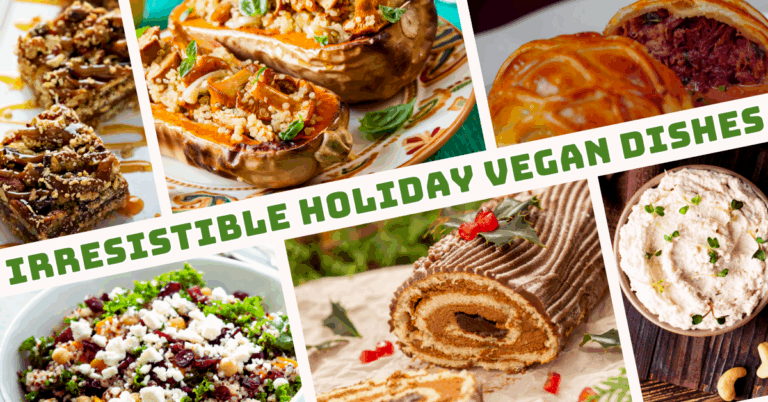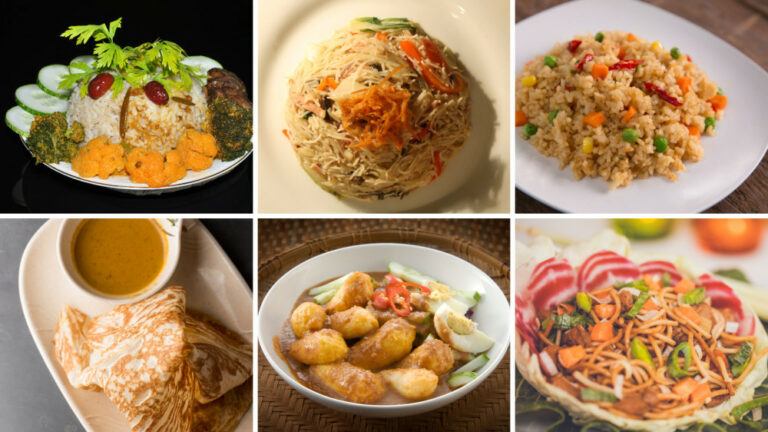Asian Vegans: How Asia Perfected The Art Of Plant-Based Eating
Asia has been celebrating plant-based eating for centuries through balance, mindfulness, and flavour. From fragrant curries to vibrant stir-fries, every dish tells a story of compassion and creativity.
Today, more people are embracing these timeless traditions for health, sustainability, and inner peace.
Discover how ancient wisdom and modern innovation blend beautifully in every bite — a true reflection of mindful living by Asian Vegans.
The Roots Of Veganism In Asia
Veganism has deep, ancient roots in Asia, long before the word “vegan” existed. Across the continent, plant-based eating was part of spiritual, ethical, and cultural life.
In India, the principles of ahimsa—non-violence toward all living beings—form the heart of both Buddhism and Jainism, inspiring diets free from animal harm.
China’s Buddhist monks followed “zhai,” a tradition of eating clean, meat-free meals to purify the mind and nurture compassion.
In Japan, temple monks developed shojin ryori, a refined vegan cuisine that celebrates harmony with nature through seasonal vegetables, tofu, and miso.
Southeast Asian temples also promoted plant-based diets rooted in mindfulness and gratitude. These centuries-old traditions show that veganism in Asia isn’t a passing trend—it’s a way of life grounded in respect for all living things. It beautifully connects food, faith, and philosophy, reminding us that eating kindly nourishes both body and soul.
What Makes Asian Vegan Cuisine Special
Asian vegan cuisine stands out for its creativity, balance, and harmony. It’s not about removing meat—it’s about celebrating plants in all their glory. Every meal is a work of art in terms of texture, colour, and flavour.
Asian cooks skillfully build umami—the deep savoury taste—using soy sauce, miso, mushrooms, seaweed, and fermented bean pastes. Coconut milk brings richness, while spices like chilli, turmeric, and lemongrass awaken the senses.
Every bite has purpose: chewy noodles, silky tofu, and fluffy rice create satisfying contrasts. Thai basil, mint, and cilantro are examples of fresh herbs that bring fragrance and brightness.
From Thai curries to Korean bibimbap, Vietnamese spring rolls to Japanese miso soup, the focus is on harmony between health and pleasure.
Rather than imitating meat, Asian vegan cuisine honours the natural beauty of vegetables. It’s soulful, nourishing, and endlessly inventive—a true celebration of how plants can delight the senses and uplift the spirit.
Explore The Bright World Of Asian Vegans
1. Indian Vegan Delights
India is the heart of vegan tradition. With millions of vegetarians and centuries of meat-free cuisine, Indian food offers endless vegan possibilities.
Staples like dal (lentil stew), chana masala (spiced chickpeas), and aloo gobi (potato-cauliflower curry) are naturally plant-based.
Coconut milk replaces dairy cream in South Indian curries, while spices—turmeric, cumin, and coriander—create soul-warming flavours.
Even Indian street food shines with vegan gems like pani puri and bhel puri. The key is balance: sweet, spicy, tangy, and savoury all in one bite.
Simply swap ghee for coconut oil or vegan butter, and every dish stays authentic yet kind. Indian vegan food feels like comfort, colour, and culture on a plate.
Chana Masala (Spiced Chickpea Curry)
A rich, comforting curry packed with protein and flavour. This Indian vegan classic brings warmth to your kitchen with simple spices and creamy chickpeas simmered in a tomato-based sauce.
Prep time: 10 minutes | Cook time: 25 minutes | Total time: 35 minutes | Servings: 4
Ingredients
- Cooked chickpeas: 2 cups
- Avocado oil: 2 tablespoons
- Onion: 1, chopped
- Tomatoes: 2, puréed
- Garlic: 2 cloves, minced
- Ginger paste: 1 teaspoon
- Cumin seeds: 1 teaspoon
- Garam masala: 1 teaspoon
- Turmeric: 1 teaspoon
- Chilli powder: ½ teaspoon
- Celtic sea salt to taste
- Fresh cilantro for garnish
Method
- Add the cumin seeds to a pan of heated oil and let them sputter.
- Add onion, garlic, and ginger; sauté until golden.
- Stir in tomatoes, turmeric, chilli, and garam masala. Cook until thick.
- Add chickpeas and ½ cup water; simmer for 15 minutes.
- Serve hot with roti or rice after garnishing with cilantro.
Nutrition (per serving)
- Calories: 230
- Protein: 10g
- Fat: 7g
- Fibre: 8g
- Carbs: 30g
Health Benefits
Chana masala is high in plant protein and fibre, supporting digestion and satiety. The spices enhance metabolism and immunity. Chickpeas regulate blood sugar and cholesterol, making this dish heart-healthy and nourishing.
Explore more Indian vegan recipes.
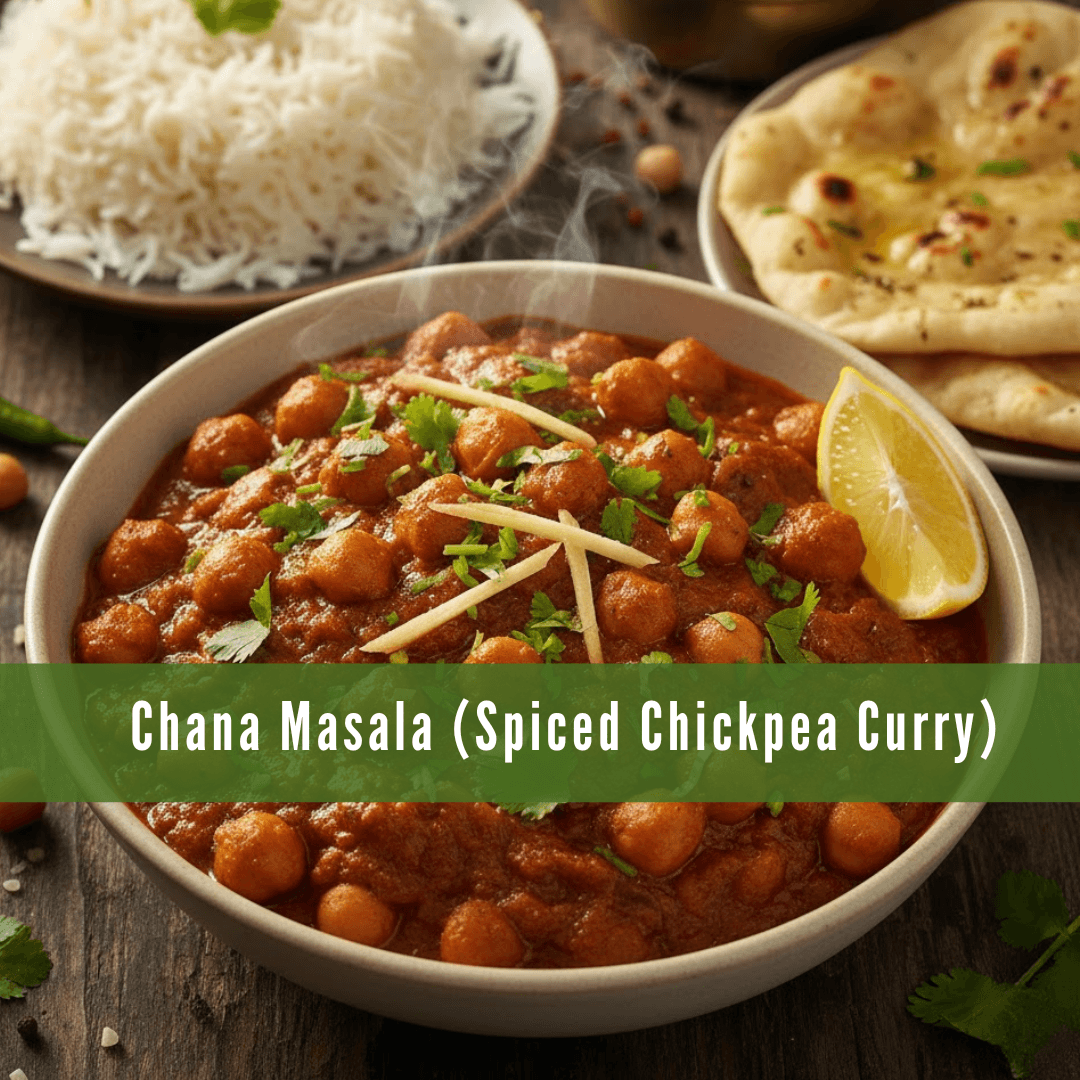
2. Chinese Vegan Classics
Chinese cuisine has deep vegan roots, largely thanks to Buddhist temple traditions. Many dishes were designed centuries ago to nourish monks without harming animals.
Tofu, mushrooms, and seitan became the heroes—absorbing sauces and carrying bold flavours beautifully. Dishes like mapo tofu, kung pao vegetables, and stir-fried bok choy are staples in vegan kitchens today.
The secret lies in balance: garlic, ginger, and soy sauce create layers of taste, while sesame oil adds aroma. From spicy Sichuan meals to delicate Cantonese soups, variety never ends.
Even traditional dim sum has vegan versions now. Chinese vegan food isn’t about sacrifice—it’s about celebration, transforming simplicity into delicious harmony.
Mapo Tofu (Vegan Style)
A spicy Sichuan favourite, this vegan version of Mapo Tofu swaps meat for mushrooms, keeping all the fiery, umami-rich flavours that make this dish irresistible and comforting.
Prep time: 10 minutes | Cook time: 15 minutes | Total time: 25 minutes | Servings: 3
Ingredients
- Soft tofu: 1 block, cubed
- Mushrooms: 1 cup, chopped
- Soy sauce: 2 tablespoons
- Chilli paste: 1 tablespoon
- Garlic: 2 cloves, minced
- Ginger: 1 teaspoon, grated
- Cornstarch: 1 tablespoon + 2 tablespoon water
- Olive oil: 2 tablespoons
- Green onions for garnish
Method
- Heat oil, sauté garlic, ginger, and mushrooms.
- Add chilli paste and soy sauce; cook for 2 minutes.
- Gently fold in tofu cubes.
- Add cornstarch slurry; simmer until sauce thickens.
- Garnish with green onions.
Nutrition (per serving)
- Calories: 210
- Protein: 12g
- Fat: 9g
- Fibre: 4g
- Carbs: 16g
Health Benefits
Tofu and mushrooms provide protein and essential minerals. Chilli and ginger enhance circulation and digestion. This low-fat, high-protein meal supports energy, heart health, and muscle repair without cholesterol.
Try these delicious Chinese Vegan Recipes.

3. Japanese Vegan Traditions
In Japan, veganism began in Zen temples long ago. The monks followed shojin ryori, a mindful, plant-based cooking style that avoids meat, fish, and pungent vegetables.
The philosophy centers on balance—colour, flavour, and nutrition in harmony. Meals often include rice, tofu, miso soup, and pickled vegetables.
Seaweed adds minerals and deep umami flavour, while sesame and soy create richness. Today, Japan blends old and new—vegan ramen, sushi rolls with avocado or tofu, and bento boxes filled with plant-based treats.
Even convenience stores now carry vegan options. Japanese vegan food teaches simplicity, mindfulness, and gratitude in every bite—making eating both spiritual and satisfying.
Avocado Sushi Rolls
A simple, satisfying vegan sushi roll featuring creamy avocado, crisp cucumber, and seasoned rice. Fresh, colourful, and easy to make at home—perfect for quick, healthy meals.
Prep time: 15 minutes | Cook time: 10 minutes | Total time: 25 minutes | Servings: 3 rolls
Ingredients
- Sushi rice: 1 cup
- Nori: 3 sheets
- Avocado: 1, sliced
- Cucumber: ½, sliced
- Rice vinegar: 1 tablespoon
- Soy sauce for dipping
Method
- Cook rice; mix with rice vinegar.
- Lay nori on a sushi mat, and spread rice evenly.
- Add avocado and cucumber.
- Roll tightly and slice.
- Serve with soy sauce.
Nutrition (per serving)
- Calories: 220
- Protein: 5g
- Fat: 8g
- Fibre: 5g
- Carbs: 32g
Health Benefits
Avocado adds heart-healthy fats, while seaweed provides minerals and antioxidants. This light meal supports brain function, hydration, and satiety without heaviness—ideal for quick energy and balanced nutrition.
Explore more Japanese-inspired vegan recipes.

4. Thai Vegan Flavours
Thai food is a sensory explosion—spicy, sweet, sour, and salty all dancing together. Vegan Thai dishes are easy to make and absolutely delicious.
Coconut milk brings creaminess to curries, while lemongrass, galangal, and lime leaves add aroma and freshness. Classic meals like green curry, pad Thai, or tom yum soup easily become vegan by swapping fish sauce for soy or tamari.
Tofu often replaces meat, absorbing those incredible sauces perfectly. Fresh herbs like basil and cilantro brighten every bite.
Even Thai street food offers vegan gems like papaya salad and coconut sticky rice. Thai vegan cuisine shows how plant-based food can be bold, colourful, and deeply satisfying.
Want to Share Your Passion for Vegan Living?
Discover how easy and fulfilling vegan living can be —
from recipes and travel to lifestyle and sustainability tips.
Read this blog post next:
How to Start a Vegan Blog (and Turn Your Passion into Purpose).
Thai Green Curry with Tofu
A creamy, aromatic curry filled with tofu and vegetables simmered in coconut milk and Thai spices. This vegan favourite is rich, fragrant, and perfect with jasmine rice.
Prep time: 10 minutes | Cook time: 20 minutes | Total time: 30 minutes | Servings: 4
Ingredients
- Coconut milk: 1 can
- Green curry paste: 2 tablespoons
- Tofu: 1 block, cubed
- Bell pepper: 1, sliced
- Broccoli: 1 cup
- Soy sauce: 1 tablespoon
- Basil leaves
Method
- Heat the curry paste in oil for 2 minutes.
- Add coconut milk and soy sauce.
- Add tofu and vegetables; simmer until tender.
- Garnish with basil and serve.
Nutrition (per serving)
- Calories: 310
- Protein: 11g
- Fat: 18g
- Fibre: 6g
- Carbs: 25g
Health Benefits
This curry offers healthy fats, plant protein, and antioxidants. Coconut milk supports brain and skin health, while vegetables add fibre and vitamins for digestion and immunity.
Here are some delicious 30-Minute Thai Vegan Recipes

5. Korean Vegan Dishes
Korean vegan food is all about balance—heat, colour, and nutrition. Traditional dishes like bibimbap can easily be made vegan with tofu, mushrooms, and colourful vegetables.
Side dishes, or banchan, such as pickled radish, spinach, and bean sprouts, are naturally plant-based. Kimchi, the national favourite, can be made vegan too—just skip the fish sauce and use seaweed or miso for depth.
Gochujang, the famous fermented chilli paste, gives every meal its signature kick. Korean cooking also uses sesame oil and garlic for richness.
The result? A vibrant, spicy cuisine that feels both energizing and nourishing. Korean vegan meals prove that flavour and wellness go hand in hand.
Korean Bibimbap with Gochujang Sauce
This vegan Bibimbap is a colourful Korean rice bowl topped with sautéed veggies and spicy gochujang sauce. It’s healthy, balanced, and bursting with flavours and textures!
Prep time: 25 minutes | Cook time: 15 minutes | Total time: 40 minutes | Servings: 4
Ingredients
- Cooked rice: 2 cups
- Carrot: 1, julienned
- Zucchini: 1, sliced
- Spinach: 1 cup
- Bean sprouts: ½ cup
- Gochujang: 2 tablespoons
- Sesame oil: 1 tablespoon
Method
- Sauté each veggie lightly or to taste.
- Arrange over rice.
- Add gochujang sauce.
- Drizzle sesame oil and mix before eating.
Nutrition Facts (per serving)
- Calories: 310
- Protein: 8g
- Fat: 9g
- Carbs: 45g
Health Benefits
Packed with fibre and antioxidants, Bibimbap promotes digestion and heart health. The spicy gochujang sauce boosts metabolism and provides probiotics for a happy gut.
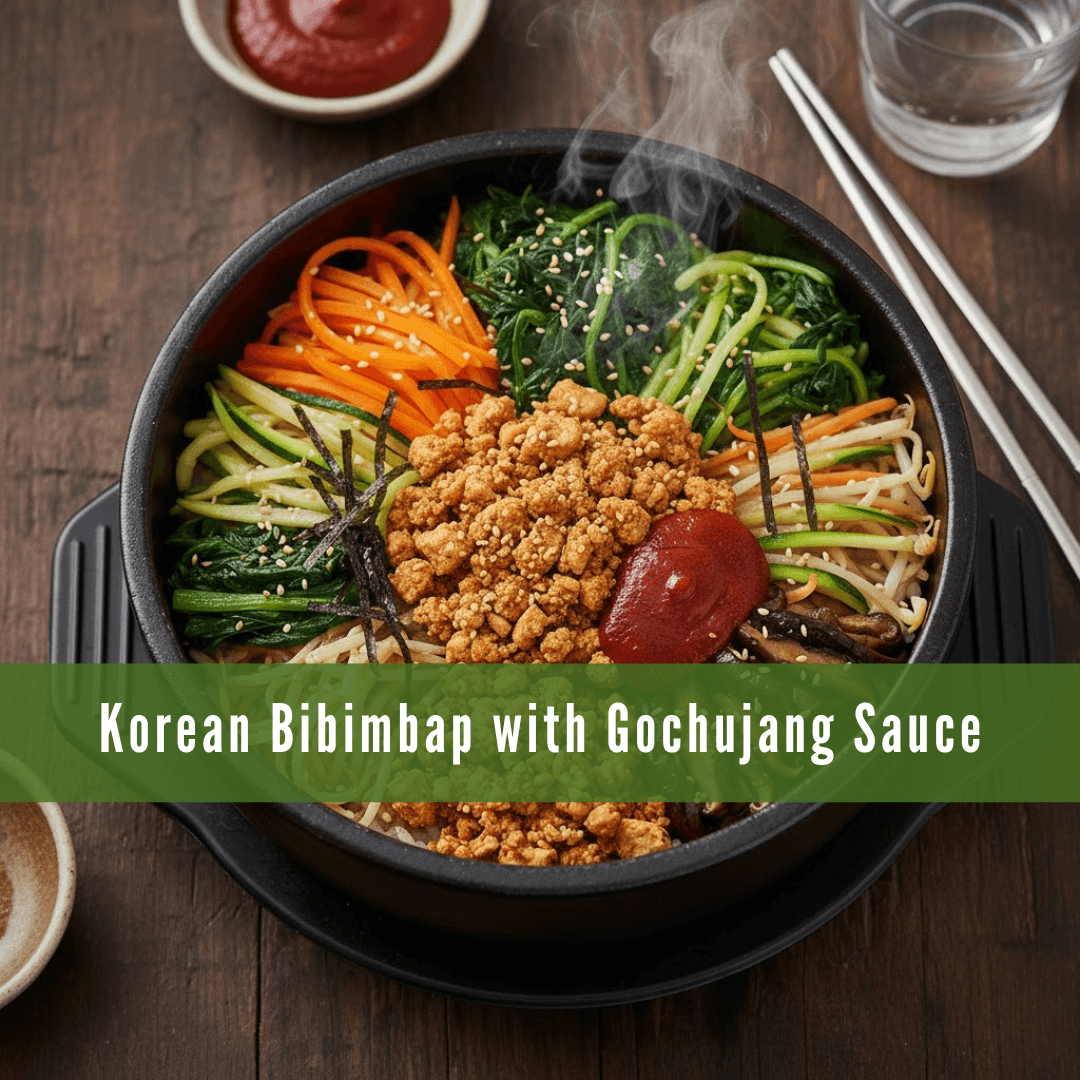
6. Vietnamese Vegan Goodness
Vietnamese food is light, refreshing, and full of contrast. Vegan versions of favourites like pho and banh mi are simple yet delicious.
A vegan pho uses vegetable broth simmered with star anise, cinnamon, and charred onion for deep flavour, then topped with tofu, mushrooms, and herbs.
Another must-try is fresh spring rolls stuffed with lettuce, mint, and rice noodles. Many temples serve “com chay,” a traditional vegan meal based on compassion and simplicity.
Vietnamese cooking focuses on balance—sweet, salty, sour, and spicy all in perfect sync. Every dish bursts with freshness and vitality, proving that vegan food can be both delicate and full of flavour.
Vietnamese Fresh Spring Rolls (Gỏi Cuốn)
These Vietnamese Fresh Spring Rolls are the ultimate light meal—crisp veggies, fresh herbs, and tofu wrapped in rice paper, served with a creamy peanut dipping sauce. Refreshing and satisfying!
Prep time: 20 minutes | Cook time: 5 minutes | Total time: 25 minutes | Servings: 4
Ingredients
- Rice paper wrappers: 8
- Firm tofu: 1 block, sliced
- Lettuce leaves: 1 cup
- Carrot: 1, julienned
- Cucumber: 1, sliced
- Fresh mint: ½ cup
- Cilantro: ½ cup
- Peanut butter: ¼ cup
- Soy sauce: 1 tablespoon
- Lime juice: 1 tablespoon
Method
- Sauté tofu until golden.
- Soften rice papers in warm water.
- Layer lettuce, veggies, and tofu.
- Roll tightly and set aside.
- For the sauce, mix peanut butter, soy sauce, and lime juice.
Nutrition Facts (per serving)
- Calories: 240
- Protein: 10g
- Fat: 9g
- Carbs: 28g
Health Benefits
These rolls are nutrient-dense yet low in calories. Fresh herbs promote digestion, while tofu offers protein and calcium. The peanut sauce provides healthy fats for heart and brain function.
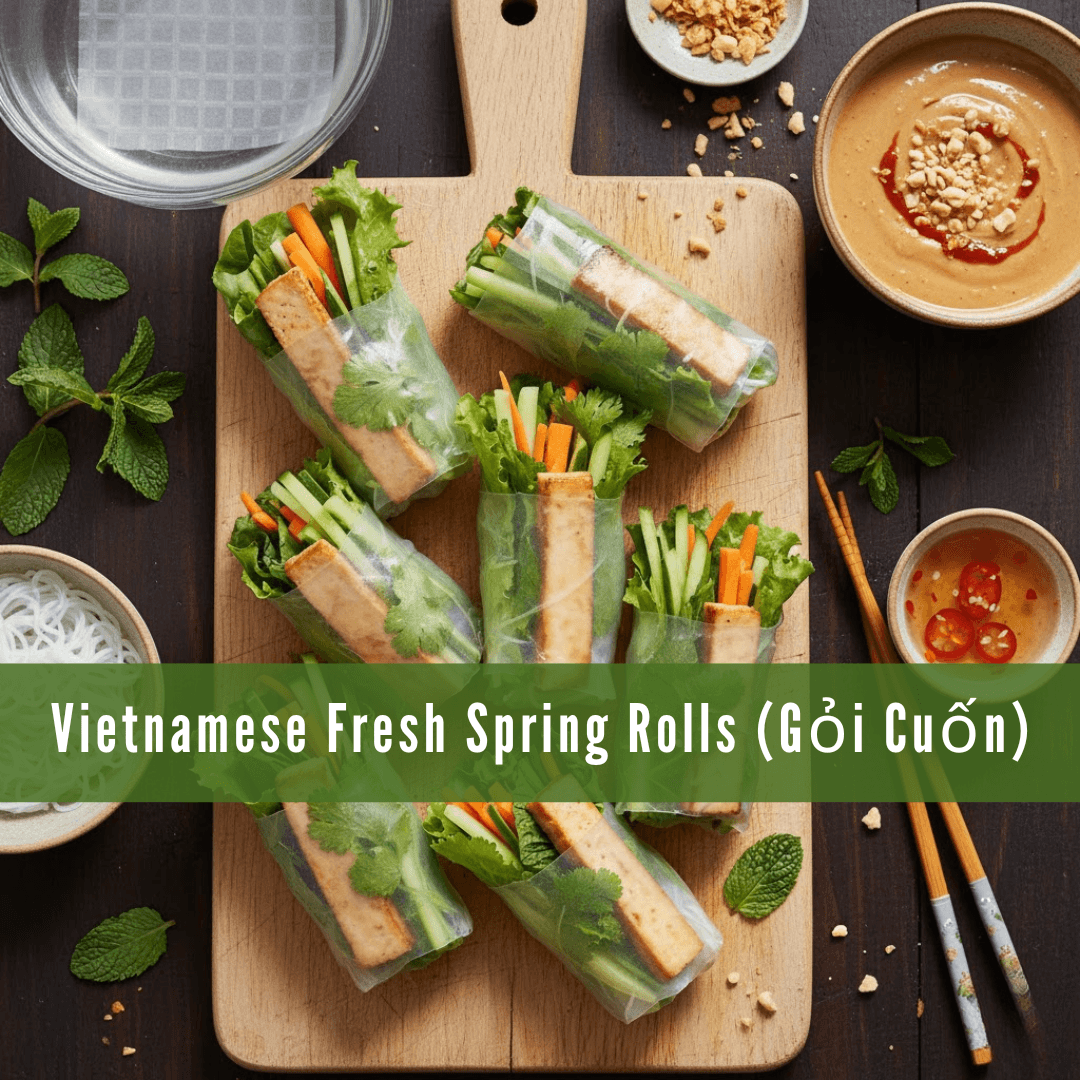
7. Filipino Vegan Twist
Filipino cuisine is evolving beautifully to include vegan options. While traditional dishes often use meat or seafood, clever cooks are giving them compassionate makeovers.
Coconut milk—a staple in Filipino cooking—adds richness to vegan adobo, ginataang gulay, and laing. Mushrooms and tofu replace meat perfectly, soaking up tangy, garlicky marinades.
Even street favourites like lumpia (spring rolls) and pancit (stir-fried noodles) adapt easily to plant-based versions. Filipino veganism celebrates local flavours with kindness—bold, comforting, and hearty.
As plant-based living grows, chefs across the islands are redefining Filipino food for a new generation—one that loves tradition but chooses compassion.
Vegan Adobo (Filipino Soy-Vinegar Stew)
This Vegan Adobo captures the beloved Filipino flavour—savoury, tangy, and slightly sweet. Tender tofu and potatoes simmered in soy-vinegar sauce create a rich, satisfying plant-based version of the national dish.
Prep time: 15 minutes | Cook time: 25 minutes | Total time: 40 minutes | Servings: 4
Ingredients
- Firm tofu: 1 block, cubed
- Potatoes: 2 medium, diced
- Soy sauce: 3 tablespoons
- Vinegar: 2 tablespoons
- Garlic: 3 cloves, minced
- Bay leaf: 1
- Brown sugar: 1 tablespoon
- Coconut oil: 1 tablespoon
- Water: ½ cup
Method
- Fry tofu until golden; set aside.
- In a pan, sauté garlic in coconut oil.
- Add soy sauce, vinegar, water, and sugar.
- Add potatoes and simmer until tender.
- Add tofu and bay leaf; cook 5 more minutes.
Nutrition Facts (per serving)
- Calories: 260
- Protein: 11g
- Fat: 8g
- Carbs: 34g
Health Benefits
Vegan Adobo is protein-rich and heart-friendly. Tofu provides lean plant protein, while garlic supports immunity. Vinegar helps balance blood sugar and aids digestion without heavy oils or cholesterol.
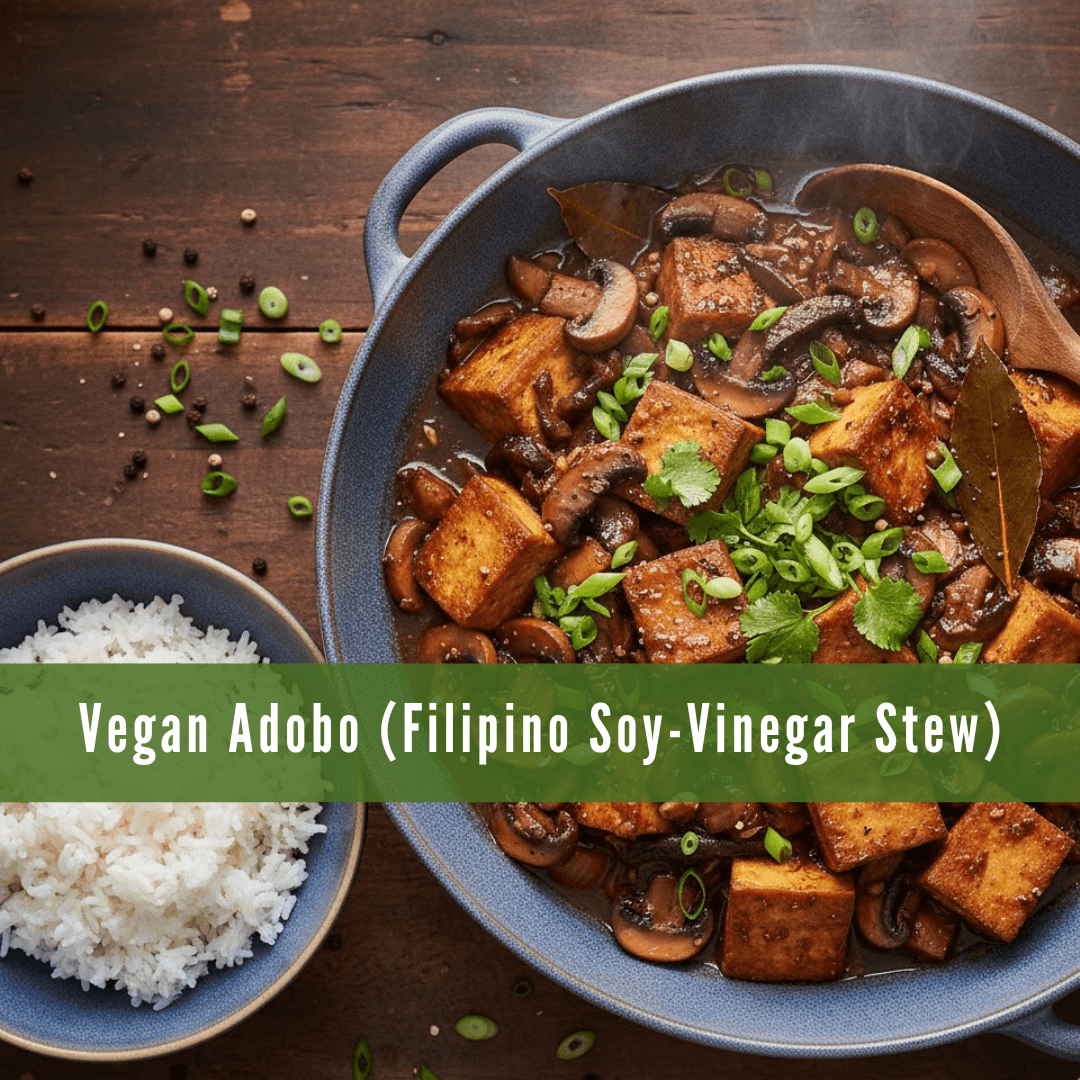
8. Indonesian Vegan Treasures
Indonesia is a vegan gem, filled with vibrant spices and plant-based staples. The country is the birthplace of tempeh, a protein-packed fermented soybean cake that’s now famous worldwide.
Locals cook dishes like gado-gado—a warm salad with vegetables, tofu, and peanut sauce—or sayur lodeh, a comforting vegetable coconut stew.
Coconut milk, turmeric, and coriander make every dish fragrant and satisfying. Many Indonesians already eat plant-based meals daily without labelling them vegan.
Street vendors sell tofu satay, fried bananas, and spicy sambal—all naturally vegan. Indonesian vegan cuisine blends earthiness, heat, and heart, showing that plant-based food can be soulful, hearty, and unforgettable.
Vegan Nasi Goreng (Indonesian Fried Rice)
This Vegan Nasi Goreng is a plant-based take on Indonesia’s iconic fried rice. It’s spicy, smoky, and packed with veggies—perfect for a quick, satisfying meal any day of the week!
Prep time: 10 minutes | Cook time: 15 minutes | Total time: 25 minutes | Servings: 3
Ingredients
- Cooked rice (day-old preferred): 3 cups
- Carrot: 1, diced
- Peas: ½ cup
- Cabbage: 1 cup, shredded
- Soy sauce: 2 tablespoons
- Chilli paste: 1 tablespoon
- Garlic: 2 cloves, minced
- Sesame oil: 1 tablespoon
- Firm tofu: ½ block, crumbled
Method
- Heat the sesame oil and sauté the garlic.
- Add tofu and cook until golden.
- Add vegetables and stir-fry for 3 minutes.
- Stir in rice, soy sauce, and chilli paste.
- Mix well and serve hot with cucumber slices.
Nutrition Facts (per serving)
- Calories: 340
- Protein: 12g
- Fat: 9g
- Carbs: 52g
Health Benefits
This dish provides balanced nutrition—fibre from vegetables, protein from tofu, and healthy carbs from rice. The chilli and garlic support metabolism, while sesame oil adds antioxidants for heart health.
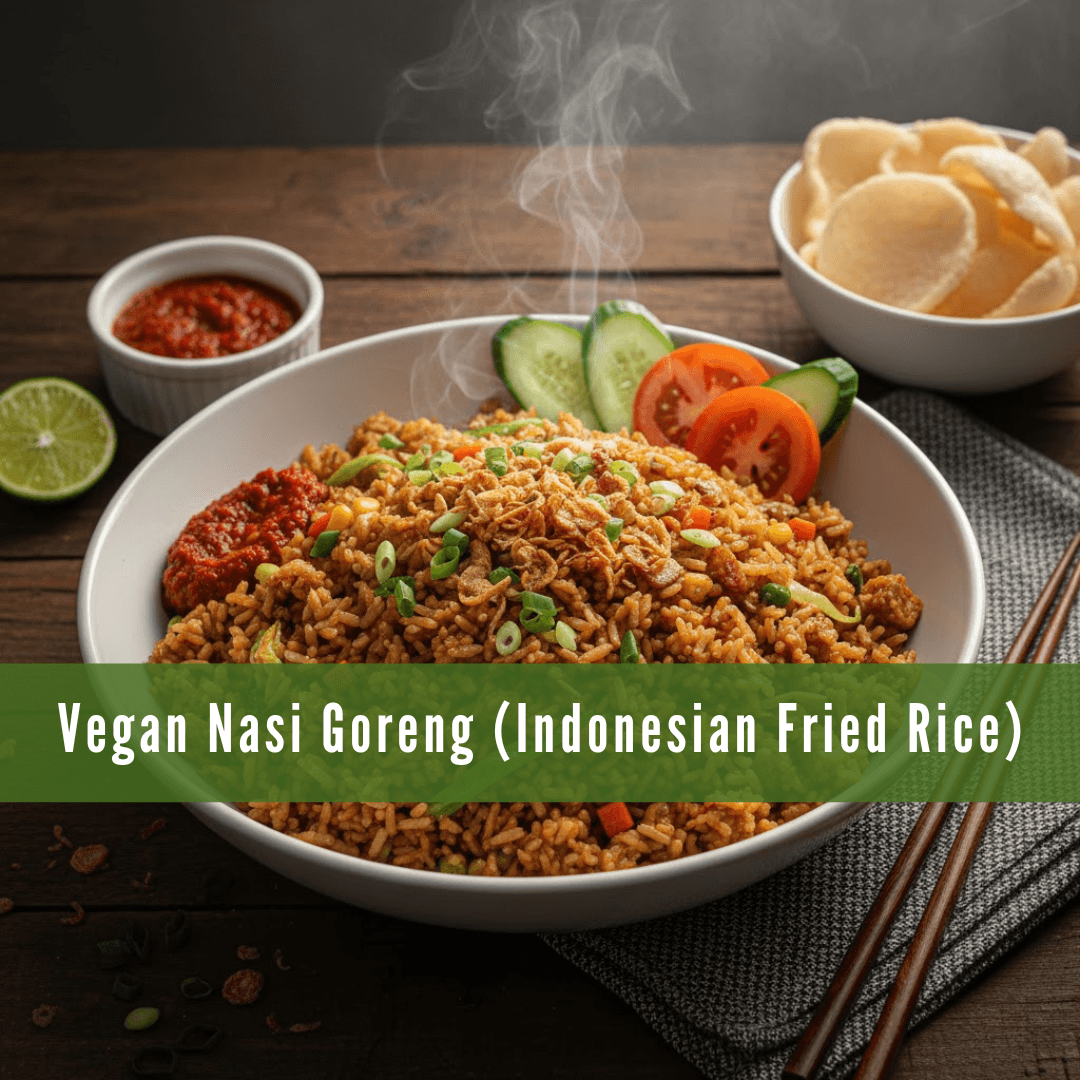
Conclusion
From sacred temples to modern kitchens, Asia’s plant-based journey continues to inspire the world. Every meal reflects harmony, respect, and love for all living beings.
By embracing these flavourful traditions, you nourish not only your body but also your spirit. Let compassion guide your plate and discover a lifestyle that’s as kind as it is delicious — the timeless wisdom of Asian Vegans.
I trust you enjoyed this article on the Asian Vegans: How Asia Perfected The Art Of Plant-Based Eating. Please stay tuned for more plant-based recipes, vegan travel tips, and lifestyle inspiration.
Take care!
— JeannetteZ 🌿
💬 Your Opinion Is Important To Me
Do you have thoughts, ideas, or questions? I’d love to hear from you. Please leave your comments below, or email me directly at Jeannette@LivingTheVeganLifestyle.org.
📚 More Vegan Lifestyle Reads
🌱 My #1 Recommendation for Online Success
Sharing my passion for vegan living — from food to fashion — has been such a rewarding journey.
If you’ve ever dreamed of building your own ethical lifestyle brand or blog, this is the best place to start.
🌟 See How Vegan Bloggers Build Online Income — Try WA Free (No Credit Card Needed)
Disclosure
This post may contain affiliate links. As an Amazon Associate and participant in other affiliate programs, I earn from qualifying purchases at no extra cost to you. Please read my full affiliate disclosure.

